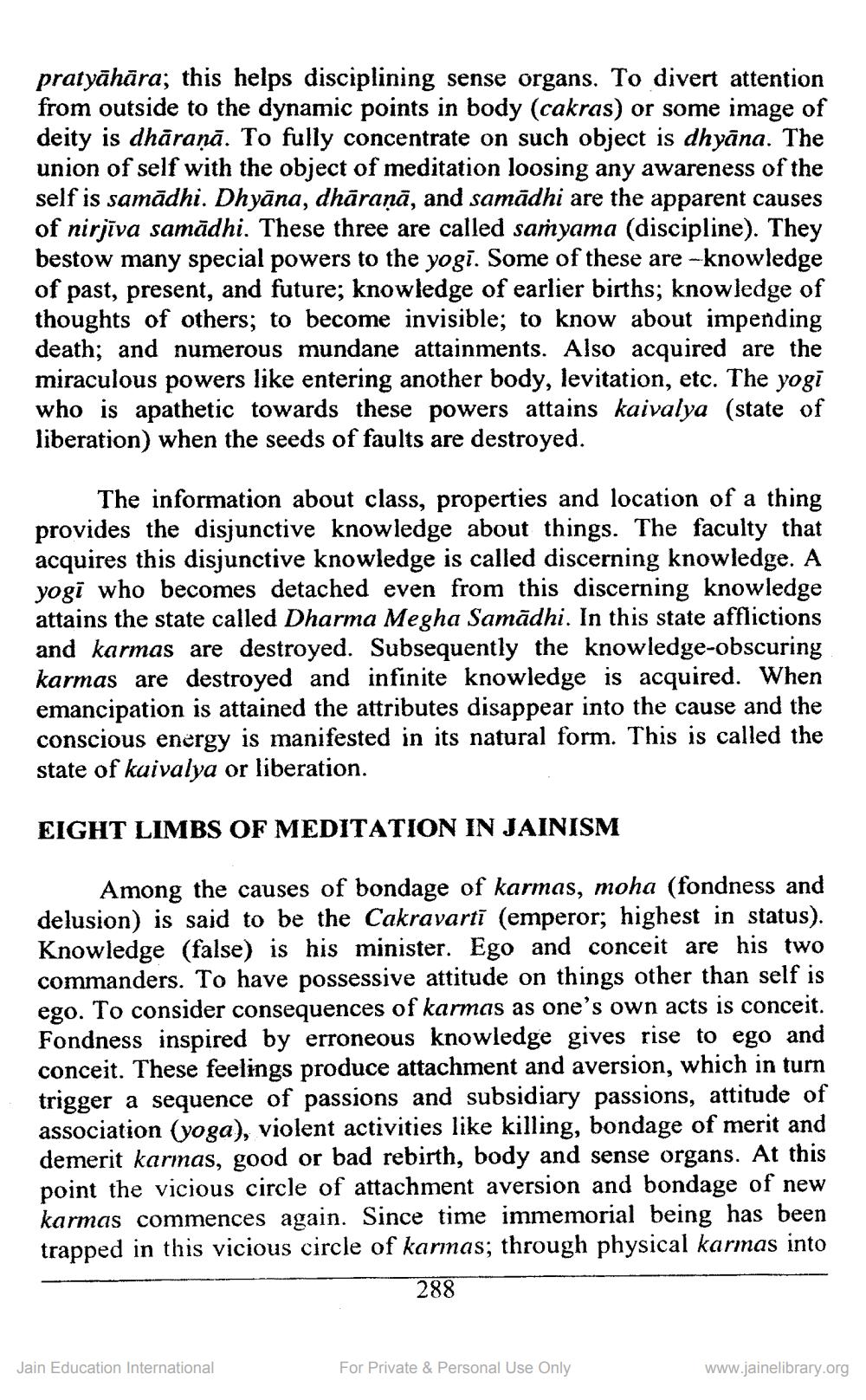________________
pratyāhāra; this helps disciplining sense organs. To divert attention from outside to the dynamic points in body (cakras) or some image of deity is dhāraņā. To fully concentrate on such object is dhyāna. The union of self with the object of meditation loosing any awareness of the self is samādhi. Dhyāna, dhāraṇā, and samādhi are the apparent causes of nirjīva samādhi. These three are called samyama (discipline). They bestow many special powers to the yogi. Some of these are - knowledge of past, present, and future; knowledge of earlier births; knowledge of thoughts of others; to become invisible; to know about impending death; and numerous mundane attainments. Also acquired are the miraculous powers like entering another body, levitation, etc. The yogi who is apathetic towards these powers attains kaivalya (state of liberation) when the seeds of faults are destroyed.
The information about class, properties and location of a thing provides the disjunctive knowledge about things. The faculty that acquires this disjunctive knowledge is called discerning knowledge. A yogi who becomes detached even from this discerning knowledge attains the state called Dharma Megha Samādhi. In this state afflictions and karmas are destroyed. Subsequently the knowledge-obscuring karmas are destroyed and infinite knowledge is acquired. When emancipation is attained the attributes disappear into the cause and the conscious energy is manifested in its natural form. This is called the state of kaivalya or liberation.
EIGHT LIMBS OF MEDITATION IN JAINISM
Among the causes of bondage of karmas, moha (fondness and delusion) is said to be the Cakravartī (emperor; highest in status). Knowledge (false) is his minister. Ego and conceit are his two commanders. To have possessive attitude on things other than self is ego. To consider consequences of karmas as one's own acts is conceit. Fondness inspired by erroneous knowledge gives rise to ego and conceit. These feelings produce attachment and aversion, which in turn trigger a sequence of passions and subsidiary passions, attitude of association (yoga), violent activities like killing, bondage of merit and demerit karmas, good or bad rebirth, body and sense organs. At this point the vicious circle of attachment aversion and bondage of new karmas commences again. Since time immemorial being has been trapped in this vicious circle of karmas; through physical karmas into
288
Jain Education International
For Private & Personal Use Only
www.jainelibrary.org




